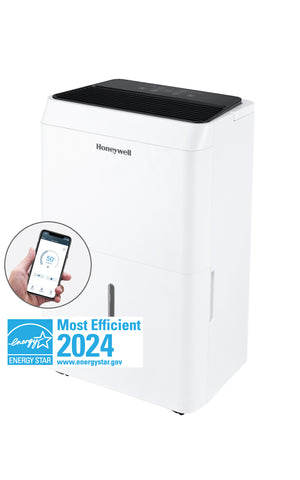
Air Purifier vs Dehumidifier, which one is better to fight Allergies?
According to the American Academy of Allergy Asthma and Immunology, more than 50 million Americans suffer from allergies each year. Contrary to popular belief, budding trees, blooming flowers, and cuddling pets are not the most prevalent causes of allergies—our homes are. More specifically, the problem is all the dust, pet hair, pollen, and other allergens in the air and settled on furniture.
Fortunately, you can easily improve the quality in your home with modern technology, and, in this article, we are taking a closer look at two most popular devices that are commonly used to help alleviate indoor allergies: air purifiers and dehumidifiers.
What Is an Air Purifier?
Air purifiers are similar to traditional cooling fans in that they have one or more fans pushing air out on the one end and creating suction on the other end. The difference is that air purifiers additionally include one of several types of air filters, whose purpose is to trap allergens as they pass through.
Most air purifiers use HEPA (high-efficiency particulate air) filters, which are made of a very fine fiber that can trap 99.97 percent of particles larger than 0.3 microns. Other types of air purifiers filter air using an electrical field and oppositely charged particles, UV light, activated carbon, and other means.
Air purifiers help people whose allergies are caused by dust mites, pollen, pet hair, and other airborne irritants. They do very little against allergies caused by the existence of mold, mildew, or dust mites, all of which are linked with excessive humidity and can be addressed by a dehumidifier.
What Is a Dehumidifier?
The purpose of dehumidifiers is to take moisture out of the air and thus make it impossible for mold, mildew, or dust mites to survive and thrive. Depending on the outside temperature, you should always try to maintain indoor humidity levels between 40 and 50 percent. If the air in your home gets below 40 percent, it may irritate your nasal passages. If it gets above 50 percent, it creates ideal conditions for mold, mildew, or dust mites.
To find out what the air humidity level in your home is, we recommend you purchase an inexpensive hygrometer, an instrument used for measuring the amount of humidity water vapor in the air.
Dehumidifiers are available in many sizes, styles, and shapes. For example, this most recommended dehumidifier from Honeywell is ENERGY STAR® 2023 Most Efficient certified and has user friendly features such as an accessible water tank with handle and washable air filter.
Conclusion
Both air purifiers and dehumidifiers can help you alleviate allergy symptoms and improve the air quality in your home. Basically, it comes down to this; is the humidity in your home higher than 50%? You probably (and very likely) can benefit tremendously from a dehumidifier. Does your home already have recommended humidity levels? Then you will be best off with an air purifier.
Before you spend any money, you should determine which of the two devices will help to create a balance in the ideal relative humidity in your home.






